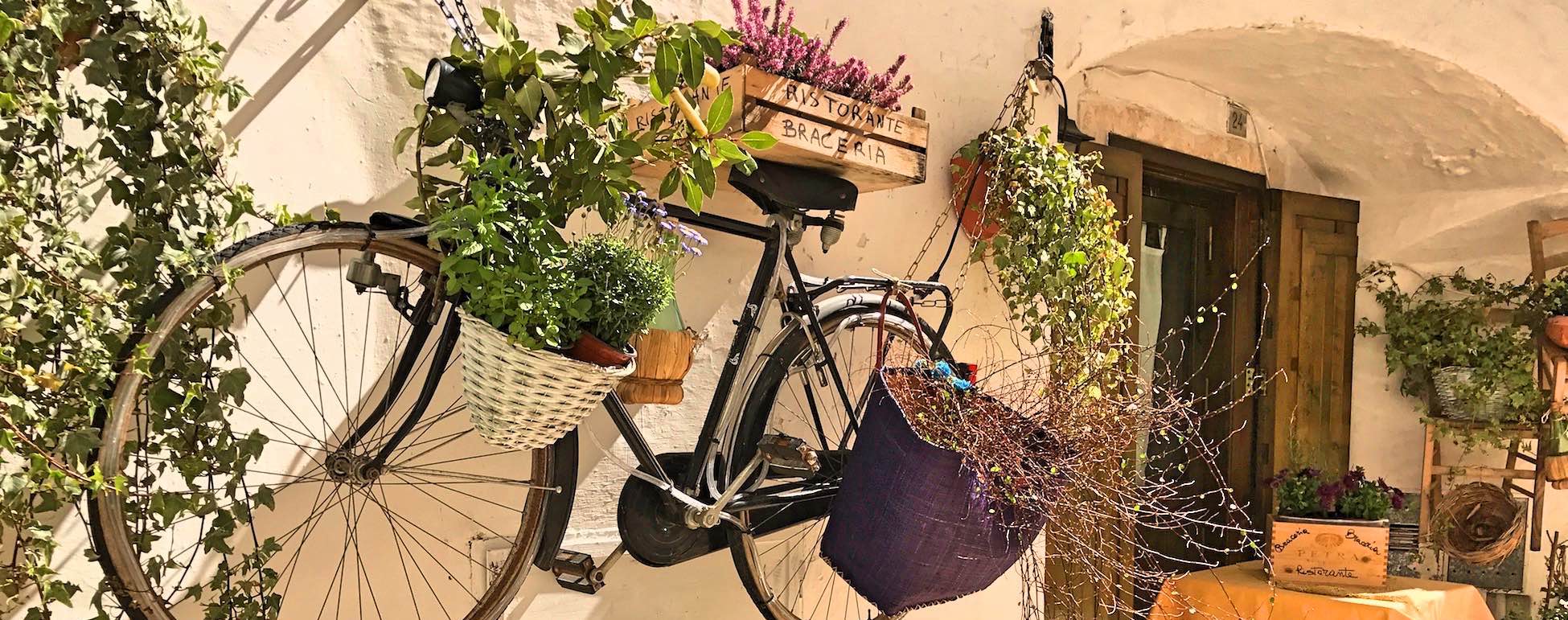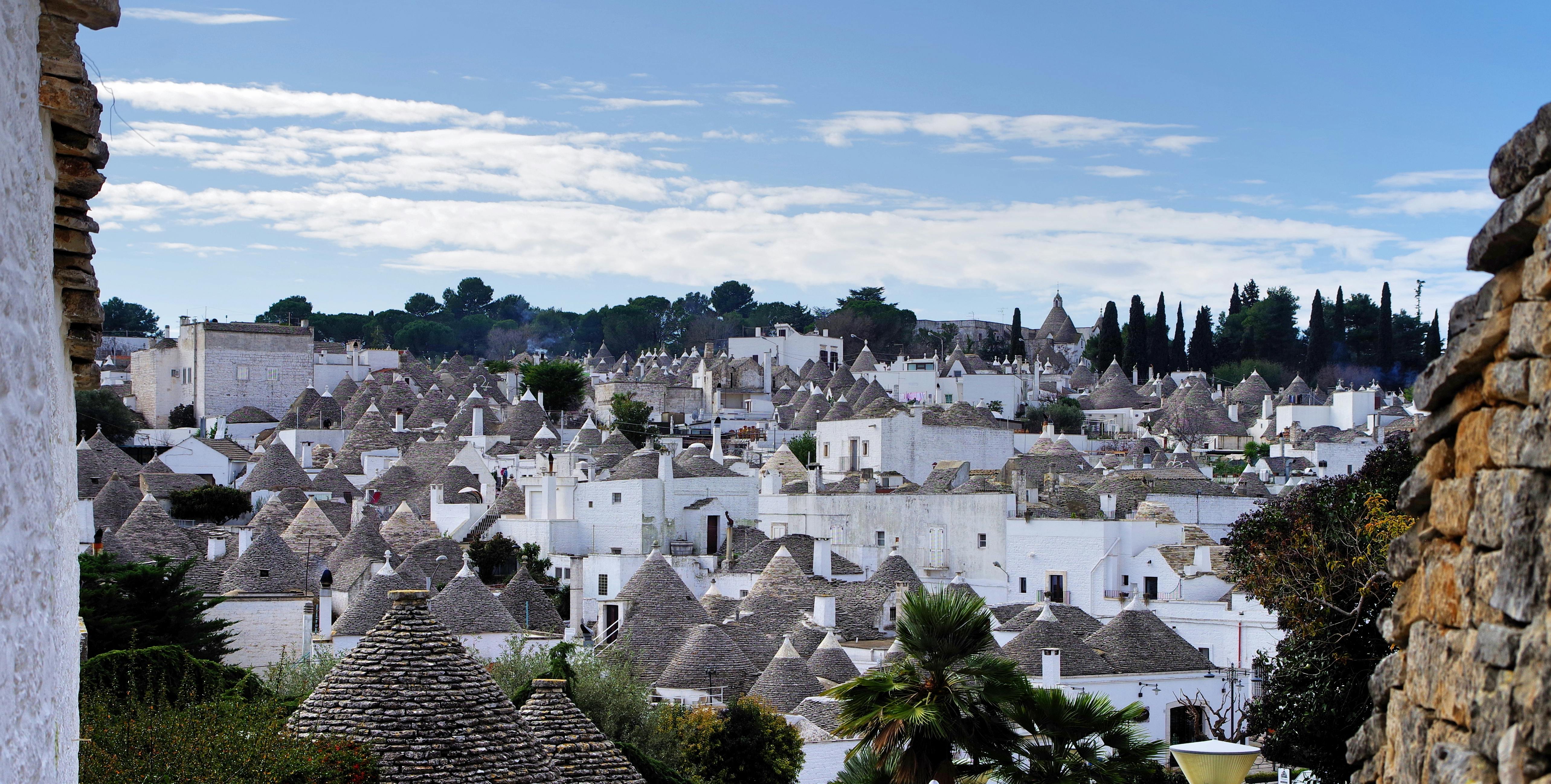Trapani owes its foundation to the ancient Phoenician people who made it one of the most important commercial ports of the ancient world. This fortunate link with Carthage penalized its development in Roman times, until all of Sicily came under first Arab and then Norman control.
A prestigious past that has left a very important trace on the current appearance of the city. Trapani seen from afar is a mix of buildings sealed by skilled stonemasons from the Baroque era, churches and imposing castles caressed by the typical smells and scents of the Mediterranean Sea which here is divided between the Tyrrhenian Sea and the Sicilian Channel.
If these places fascinate you, you can visit Trapani with one of our tours in Sicily:
⇒Magna Via Francigena: a piedi da Palermo ad Agrigento
What to see in Trapani
Trapani is one of the most beautiful cities in Sicily.
Why not decide to spend a carefree day to discover the beauties of this fascinating village in Sicily?
If you want to spend a day in Trapani, we have prepared a list with things to see and visit in peace:
- Trapani city walls
- Porta Botteghelle
- Ligny Tower
And now let's set off together to discover the most identifying places in Trapani!

Trapani city walls
A walk in Trapani certainly starts from the walls to slowly discover, one step after another, its ancient past that the warm wind blowing from nearby Africa does not disrupt. Of the ancient fortification placed to protect the town from frequent attacks by pirates and conquerors, only 1 km remains from Piazza Mercato del Pesce to Bastione Conca, a route that allows you to admire an unforgettable panorama that fascinates visitors from all over every day of the world. The city walls were completed by Charles V in 1545, ten years after he arrived in the city on his return from the wars in Libya and Tunisia for control of the Mediterranean.
Porta Botteghelle
As you continue along the walls, the streets branch off leading to the historic center of Trapani up to Porta Botteghelle, dating back to the end of the 13th century when Giacomo D'Aragona completed the expansion of the city, the last slope before reaching the suggestive cove that hosts small fishermen's boats waiting for a new fishing trip.
Ligny Tower
Give yourself a few minutes to take a photo of the colors of the sunset that pour into the water, coloring the sea surf with shades ranging from red to orange. From here we continue towards that strip of land of the ancient city sealed by the imposing Ligny Tower, built in 1671 during the Spanish domination of Sicily. Today it houses the Museum of Preistoria and the Museum of the Sea, but the structure is that of a quadrangular tower that narrows upwards.
What to do in Trapani - the Slow Active Tours proposal
Once you have discovered the wonders hidden among the streets of Trapani, the time has come to get to the heart of the sounds and smells of this ancient village.
-
Salt pans of Trapani
An essential stop for visiting the city. It is no coincidence, in fact, that it would seem that the trade in salt, the white gold of Sicily, dates back to the era of Phoenician domination. Important for understanding the history of the city is a visit to the salt mines museum which includes not only the tanks in which the salt was extracted, but also a series of mills and period equipment.
-
Agostino Pepoli Regional Museum
The Museum is located inside the former convent of the Carmelitani Fathers, near the Sanctuary of Maria SS. Annunziata, where the Madonna of Trapani, a famous marble simulacrum from 1360, is kept.
The Museum houses a vast and detailed selection of works of art from the private collection of Count Agostino Pepoli. Give yourself time for a journey through the history of the city among valuable paintings, an expression of Sicilian artistic culture between the 13th and 19th centuries, sculptures, nativity scenes of Trapani craftsmanship, goldsmithery and majolica depicting tuna fishing. -
The astronomical clock
Designed and built by the Trapani master Giuseppe Mennella in 1596, it is one of the oldest in Europe. The clock, designed on one of the four watchtowers that were originally used to protect the city walls, consists of two circular dials: the Sun dial and the Lunarium. At the center of the latter there is a hole representing Planet Earth.
-
Visit Favignana
It is one of the main islands of the Egadi archipelago in Sicily. “The great butterfly on the sea” is an island that has based its wealth on the sea and fishing while maintaining the characteristics of an ancient fishing village intact. Added to this is all the charm of a genuine and relaxed atmosphere of a typical southern village. All characteristics that today make Favignana one of the most fascinating destinations in all of Sicily. The sea with crystal clear waters is not the only attraction of the island. The Favignano coasts in fact offer the possibility of choice both to those who prefer to abandon themselves among the fine sand that contrasts with the intense southern sun and to those who love knowing every detail of the rocky inlets. What they have in common is the possibility of enjoying a sunset with intense colors every day like this land of immense beauty.
Like Spiaggia Bue Marino for example, one of the favorite destinations for those looking for crazy inlets from which to dive into the sea. From a tuff extraction quarry, its cliffs today offer a fascinating landscape, a perfect balance between nature and man's work.
The white sand of Cala Rossa represents a corner of paradise for those who want to wear a mask and snorkel and let themselves be guided by the beauty of the seabed and the nature that populates it.
The historical memory of this island is preserved inside the former Florio delle Tonnare factory. An indelible imprint that provides a glimpse into the life of the inhabitants of the time, dedicated to the processing of tuna which was caught and then preserved here. Naturally today the plant is no longer in operation but it is open to anyone who wishes to admire the numerous finds found in the Egadi Islands. The Castle of Santa Caterina offers a view from the highest point of the island, on the hill of the same name from which the castle takes its name. -
Visit Levanzo
The smallest island of the Egadi archipelago, Levanzo is a little jewel cradled by the waters of the crystalline sea overlooking Trapani. Favored by its position, it is located just 13 km from the mainland, it is a natural oasis finely shaped by man who among whose shores has always lived in harmony with nature that grows luxuriant under the warm Mediterranean sun. Getting lost among the houses with the typical blue-painted windows is simple and pleasant, perhaps savoring a typical thirst-quenching granita or for the hungriest a cabbuccio alla levanzara, a sandwich with pizza dough topped with fresh fish of your choice.
However, the peculiarity of Levanzo is due to the numerous limestone caves. Among these, the Grotta del Genovese is of notable international interest , one of the most important archaeological sites in Sicily, frescoed with depictions dating back to the Upper Paleolithic.
The Grotta del Genovese represents a very important testimony to the history of humanity which still today allows us to discover and learn more details of the epochal passage that affected the men of the time, who from a nomadic life gradually got used to a more sedentary life. For scholars, this marks the transition from the Paleolithic to the Neolithic, when primitive men from skilled hunters also became gatherers capable of producing what they consume. -
Magna Via Francigena: from Palermo to Agrigento
Slow Active Tours offers an exciting and intriguing walking journey to discover the hidden beauties of Sicily from north to south, from the Tyrrhenian Sea to the Mediterranean Sea.
Festivals and Popular celebrations in Trapani
One of the most anticipated and fascinating events in Trapani is certainly Holy Week in which rites, processions and religious functions take place which combine faith, traditions and folklore, creating a unique and evocative atmosphere. Since the 16th century, the procession of the mysteries has taken place in the streets of the city. In fact, it is said to have Spanish origins and is made up of twenty sacred groups representing the Passion and Death of Christ. The event takes place for approximately twenty-four hours, involving many observant people who, from the balconies of their homes, admire the works of art, skilfully made of wood, canvas and glue, and decorated with flowers and silver. The procession ends with a final blow of the ciaccula, a small musical instrument typical of this holiday, while the church door closes and the Mysteries are kept until the following Good Friday.
Typical dishes of Trapani
The traditional cuisine of Trapani reflects much of the influence of the sea and the activities linked to them. This explains why in Trapani they say that nothing of the tuna is thrown away! Particularly tasty and appreciated are the tuna appetizers, like the bottarga, they are derived from the various processes of red tuna which until a few years ago was caught in the traps of Trapani.
The proximity to the African coasts and the long Arab domination are unequivocally reflected in the traditional Trapani-style seafood couscous. In fact, cùscusu is the dish that best represents Trapani and its maritime culture and was once the dish that accompanied parties and great occasions.
Trapani was once a melting pot of ethnic groups and peoples united by the maritime tradition, and this is clearly evident in the other typical dish: busiate with Trapanese pesto which originates from Ligurian garlic, used by Genoese sailors to preserve fish on ships and which the Trapani fishermen adopted, adding local products such as tomatoes and almonds.
In Sicily, street food has a long and consolidated tradition and Trapani’s version of cunzatu bread cannot be missing. It is simple homemade bread cooked in a wood oven and seasoned while still hot with olive oil, oregano, anchovies, tuna or primo sale and sliced fresh tomato.
Eating and Drinking in Trapani
Here are some suggestions from the area:
Osteria La Dolce Vita in Egadi street 2. Small but welcoming place. Ideal for those who want a fish-based lunch or dinner.
Trattoria al Solito Posto in Orlandini street 30. Classic restaurant with a tavern atmosphere, known for its Sicilian seafood first courses, such as busiate with anchovies.
Taverna dei Pazzi in Torrearsa street 58. Youthful and welcoming place. Ideal for an aperitif, a meal or a drink.
So what are you waiting for? Get your stuff ready and off you go!





